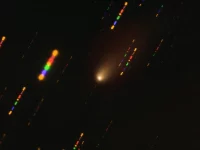YouTube’s Algorithm Keeps Suggesting Users Watch Climate Change Misinformation

LIER And it's monetizing that misinformation with ads for the World Wildlife Fund and Greenpeace.
If you search for “climate change” on YouTube, one of the videos you will be recommended to watch is “What do scientists say?” which will tell you that there is “no evidence that CO2 emissions are the dominant factor in climate change.”
Not only is this false, but the video being promoted by YouTube’s recommendation algorithm is also being monetized by the company with ads from Greenpeace.
The revelation comes in a report from Avaaz, a non-profit rights group, which claims that YouTube is promoting climate change misinformation to millions of users while making money from that content by selling ads to organizations like Save the Children and the World Wildlife Fund. The bombshell report comes despite repeated claims by the company that it is making big efforts to eradicate the problem of misinformation about climate change being promoted on its platform.
“YouTube is the largest broadcasting channel in the world, and it is driving millions of people to climate misinformation videos,” Julie Deruy, a senior campaigner at Avaaz, said in a statement. “This is not about free speech, this is about free advertising YouTube is giving to factually inaccurate videos that risk confusing people about one of the biggest crises of our time.”
YouTube has long claimed to take the issue of conspiracy theories and disinformation seriously, and in 2015 it launched a campaign called #OursToLose that urged content creators “to continue helping people to broadcast their message, empower their communities, and even catalyze a global movement to further action on climate change.”
Last year, the company published a whitepaper on disinformation where it claimed that it “introduced a higher bar for videos that are promoted through the YouTube homepage or that are surfaced to users through the “watch next” recommendations.”
To compile its research, Avaaz conducted a series of YouTube searches in English on three climate topics — ”climate change” global warming and “climate manipulation.” They collected the top results and queried YouTube APIs asking for the top related videos from these search results, which are the videos that appear in the ‘Up Next’ feature and the suggestions bar.
The end result was a cache of 5,537 videos with the following results:
• For the search term “global warming,” 16% of the top 100 related videos included under the up-next feature had misinformation about climate change.
• For the related videos recommended to users who searched “climate change” this number equals 8% and rises to 21% for the search term “climate manipulation.”
• The climate misinformation videos Avaaz reviewed had 21.1 million views collectively.
• Ads for some of the world’s most trusted brands were found on climate misinformation videos including household names like Samsung, L’Oréal, Decathlon, Danone, Warner Bros, and Carrefour.
• One in five ads found were from green or ethical brands including Greenpeace, WWF, and Save the Children.
YouTube’s recommendation algorithm is hugely powerful, driving up to 70 percent of total views on the platform. Yet, despite the evidence presented in the report, YouTube asserts that the algorithm is working as intended.
“As our systems appear to have done in the majority of cases in this report, we prioritize authoritative voices for millions of news and information queries, and surface information panels on topics prone to misinformation — including climate change — to provide users with context alongside their content. We continue to expand these efforts to more topics and countries,” YouTube told VICE News in an emailed statement.
A company spokesperson also pointed out that Avaaz’s use of the YouTube API to return a set of videos linked to the original search result could be impacted by outside factors, such as the fact that a third-party website would link to a set of videos in the same article.
YouTube faced similar criticism last July, when social scientist Joachim Allgaier from RWTH Aachen University in Germany, published a report that found that searching for climate change-related results for which “fewer than half of the videos represent mainstream scientific views.”
At the time YouTube said it was working on improving its algorithm to boost “authoritative voices” over conspiracy theories, but Avaaz’s report suggests little has changed in the last six months.
"YouTube said they are taking this issue really seriously and that it's going to improve, but from what I read here, I get the impression that it has not improved that much really and if they are still monetizing this content and also recommending it. It is actually really, really disappointing,” Allgaier told VICE News.
When this was put to a YouTube spokesperson, they said that if you look at the videos cited by Avaaz in the report, several come from what YouTube labels as authoritative voices — such as Fox News and Canadian conference series IdeaCity.
YouTube doesn’t manually pick and choose these authoritative voices, but relies on a ranking algorithm that is constantly being tweaked to recommend what it deems trustworthy sources to users.
This means that YouTube’s algorithm is coded to boost this content even if it contains misinformation. YouTube told VICE News that the content shared by these trusted channels as simply discussions on controversial topics and that going down the road of banning channels simply for mentioning contrarian views would be very dangerous.
But the reality remains that YouTube is making money from videos espousing climate change misinformation and boosting those videos by recommending them to users.
"The fact that there is still quite a lot of misinformation on YouTube when you're looking for climate-related terms and also the fact that still a lot of people are watching it shows us that something is wrong here,” Allgaier said.










